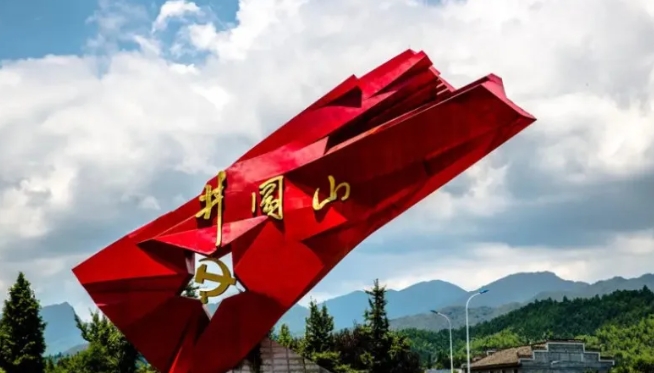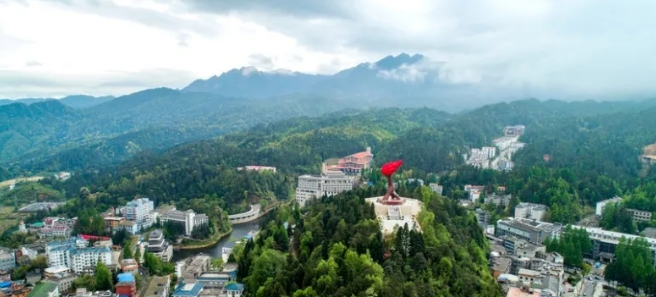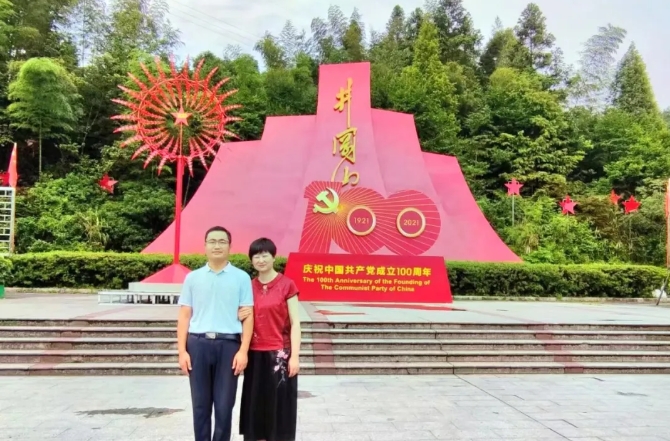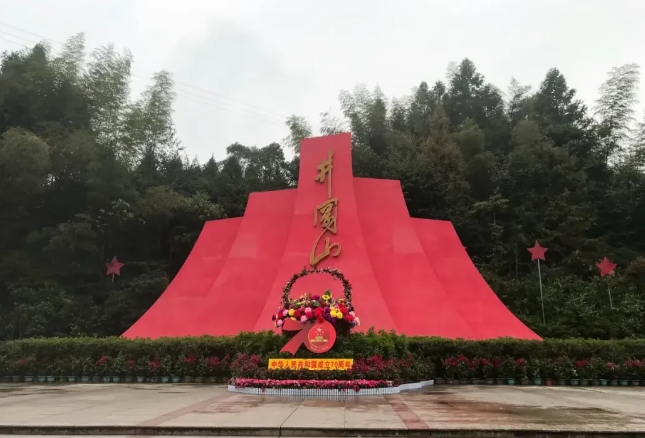1,Introduction to Jinggangshan Scenic Area
Knowledge of Jinggangshan began from the text “Bamboo in Jinggangshan”. Further understanding came from Chairman Mao’s “Jinggangshan in the Moonlight of the West River”.

The Jinggangshan Scenic Area is a national 5A-level scenic area and a famous national red tourism scenic spot. It is a mountainous scenic tourist area integrating cultural landscapes, natural scenery and alpine rural areas. It is located about 35 kilometers southwest of Jinggangshan City.
The scenic area has 11 major scenic areas including Ciping Scenic Area, Main Peak Scenic Area, Huangyangjie Scenic Area, Longtan Scenic Area, Maoping Scenic Area, etc., with 76 scenic spots and more than 460 scenic landscapes.
2. Main scenic spots in Jinggangshan Scenic Area

The main scenic spots are: Jinggangshan Revolution Museum, Jinggangshan Revolutionary Martyrs Cemetery, Jinggangshan Revolutionary Struggle Site Group, Yicui Lake Park, Nanshan Park, Tianjie, etc.
#Huangyangjie: It is one of the five famous sentry posts in Jinggangshan. It guards the traffic artery at the junction of Hunan and Jiangxi provinces. Surrounded by high mountains and lofty peaks, it is extremely steep and unclimbable. It is the north gate of the Jinggangshan revolutionary base area. On August 30, 1928, the famous Huangyangjie Defense Battle took place here. Comrade Mao Zedong once wrote a poem saying: “The cannon roars on Huangyangjie, reporting that the enemy troops have fled at night.”
#Bamian Mountain: The Bamian Mountain sentry post is located 19 kilometers northwest of Ciping, with an altitude of 1484 meters. It is one of the five sentry posts of the Jinggangshan military base area. Standing on the sentry post and looking into the distance, the rolling peaks are all in sight, hence the name “Bamian Mountain”.
#Shangjing: There are Shangjing Red Army Mint and Bai Zhu Garden. The Red Army Mint is the first mint of the Red Army and the first mint established under the leadership of the Communist Party of China. Its former site is located in Shangjing Village, Ciping.
Maoping Scenic Area: Maoping Township is a township under the jurisdiction of Jinggangshan City. It is located at the foot of the mountain northeast of Huangyangjie. It is an important part of the Jinggangshan revolutionary base area and one of the main birthplaces of the Jinggangshan spirit. During the Jinggangshan struggle period, the Party, government and military leadership organs and the Red Army logistics organs on the border of Hunan and Jiangxi were once established here. The Octagonal Building where Mao Zedong once lived and worked is located in this township.
The former site of the First Party Congress on the Border of Hunan and Jiangxi: It was originally “Xie’s Shen Gong Ancestral Hall”. On May 20, 1928, the first Party congress on the border of Hunan and Jiangxi was held here.
Maoping Red Army Hospital: It was originally “Panlong Academy”. It is located at the entrance of Maoping Village. The first and second floors are the first Red Army hospital in the base area. The third floor is the former site of the Front Committee of Jinggangshan and the Special Committee on the border of Hunan and Jiangxi.
Longshi Scenic Area: Located in Longshi Town, Jinggangshan City, more than 50 kilometers away from Ciping. It is the center of the Jinggangshan revolutionary base area and also a famous holy place for the Zhu-Mao reunion. Longshi is the county seat of the former Ninggang County. It is a small mountain town with beautiful mountains and clear waters, hidden in the vast forest. The scenic area includes Longjiang Academy, Reunion Square, Reunion Bridge, Jinggangshan Base Area Martyrs Cemetery, etc.
Longjiang Academy: It is located under Wuhu Ridge by the Longjiang River in Longshi Town. It was built in the spring of the 20th year of Daoguang in the Qing Dynasty. It is named after the Longjiang River. It is the former site of the Zhu-Mao reunion and also the site of the first Party congress of the Fourth Red Army. It is also the former site of the officer training team of the Chinese Workers’ and Peasants’ Revolutionary Army. Tracing back to its origin, it is also the former site of the first military and political academy of our army.
Longtan Scenic Area: It is a scenic area with the remarkable characteristic of gathering waterfalls. It is known as “five pools and eighteen waterfalls”.
The main scenic spots are: Longtan, Jinshimian, Xiaojing Red Army Hospital, the place where the Red Army wounded and sick soldiers in Xiaojing died, etc.
3. Transportation Guide to Jinggangshan Scenic Area
Self-driving route: (1) Entering the scenic area from east to west: G1517 Puyan Expressway → Exit at Xiaping Interchange → Jinggangshan Scenic Area. (2) Entering the scenic area from north to south: Jiangxi Expressway S81 Yijing-Suichuan Expressway → Exit at Xiaping Interchange → Jinggangshan Scenic Area. After getting off the expressway, you can see the Jinggang Red Flag sign.
4,Tourist Routes in Jinggangshan Scenic Area:
The Jinggangshan Scenic Area is a scenic area mainly for red tourism. Foreign tourists come all the way to Jinggangshan. Certainly, red classics are the main focus. We stayed in a homestay near the Red Song Square on Tianjie in Ciping Town. The tour route is:
Day 2: Red Song Square → Tourist Service Center → (take a scenic area bus) → Huangyangjie Scenic Area → Longshi Scenic Area → Maoping Scenic Area → Mint, Bai Zhu Garden. In the evening, play on Tianjie in Ciping.
Day 3: Ciping Scenic Area (Red Song Square → Yicui Lake → Jinggangshan Revolution Museum → Nanshan Park).
Note: There are many scenic spots in Jinggangshan. It is impossible to go to all of them. Make appropriate choices. Natural landscapes such as the main peak, Longtan, Bijia Mountain and Shuikou can be freely chosen for play.
5. Precautions for Tourism in Jinggangshan Scenic Area
(2) Almost no climbing is required in red scenic spots. When visiting, look and listen more, otherwise you won’t learn much.